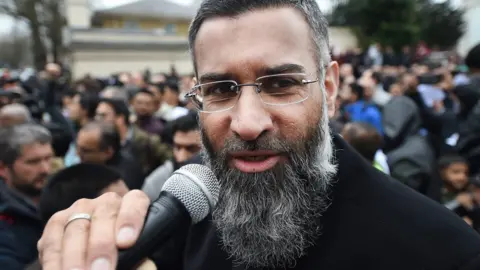London attack: How are UK extremists radicalised?
 Gabriele Sciotto
Gabriele SciottoPolice have identified the three attackers who killed seven people and injured 48 in London on Saturday. What do we know of how UK extremists become radicalised?
In her statement following the attack at London Bridge, Prime Minister Theresa May once again highlighted the role of the internet as a "safe space" for terrorist recruitment and radicalisation.
Over the past five years, we have tracked the flow of foreign fighters into Syria and Iraq, collecting information on nearly 800 Western recruits - often including their social media footprints.
Our experience and research suggests that radicalisation rarely happens exclusively online, and that the role of the internet is complex.
What we know of the radicalisation trajectory of one of the alleged attackers in London Bridge demonstrates this.
A former friend told the BBC's Asian Network that he had reported the man to the authorities after he had become a follower of Ahmad Musa Jibril through the internet.
Mr Jibril is a Palestinian-American radical cleric based in Michigan, who developed a prolific online following among Western recruits to the Syrian jihad.
More than half of recruits to the so-called Islamic State who we studied for a 2014 report were following him on Facebook or Twitter - making him an important figure.
We found that he did not openly incite his followers to violence, or explicitly encourage them to join the Syrian jihad.
Instead, he adopted the role of ideological cheerleader, supporting the principles of armed opposition to Syrian President Bashar al-Assad and making people feel guilty for not joining the fight.
However, our research suggests that the decisive factor in moving people from being extremists in terms of their thoughts and beliefs to becoming terrorists is not online propaganda but offline social networks.
It now seems likely that at least one of the attackers had been part of the extremist network al-Muhajiroun - based around the notorious British extremist Anjem Choudary, who was convicted of inviting others to support IS in 2016.
Choudary also had a YouTube channel, but practically all of his followers were known to him personally and were recruited face to face.
 EPA
EPAWhat he offered was a sense of community, belonging, and camaraderie within a circle of peers.
This builds strong interpersonal bonds based on what has been called "in-group love".
The internet plays an important role in terms of disseminating information and building the brand of organisations such as IS, but it is rarely sufficient in replacing the potency and charm of a real-world recruiter.
Perhaps more than any other radical cluster, the network around Choudary has been linked to scores of attacks, both at home and abroad, and dozens of foreign fighters joining IS in Syria.
It is one thing for the internet companies to pull down radical propaganda.
But they face an uphill battle while preachers such as Choudary have spent years spreading their message virtually unchallenged on British streets.

About this piece
This analysis piece was commissioned by the BBC from experts working for an outside organisation.
Dr Shiraz Maher is deputy director of the International Centre for the Study of Radicalisation, King's College, London. Prof Peter Neumann is its director.

